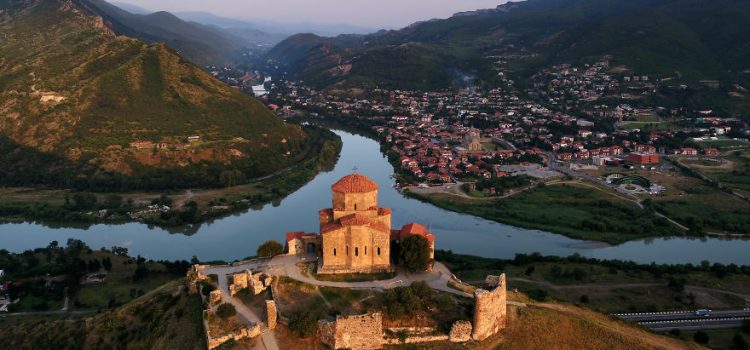According to local history, in the early fourth century a wooden cross was erected over a pagan sanctuary on a rocky mountaintop overlooking Mtskehta, the former capital of the Georgian Kingdom of Kartli-Iberia. The construction of the cross symbolized the fall of paganism and rise of Christianity in Georgia. In 545, a cruciform church, known as the Small Church of Jvari, was built just north of the cross. Between 586 and 605, a larger church was constructed directly above the site of the wooden cross, the base of which is still visible inside the church. Exceptional relief sculptures decorate the exterior façades of the Great Church. Their fine proportions and remarkable technique distinguished the sculptures from the earlier bas-relief carving common in the region. In 2004, the monastery was placed on the UNESCO World Heritage List as part of the Historical Monuments of Mtskheta and was added to the UNESCO List of World Heritage in Danger in 2009.
2006 World Monuments Watch
Greatly deteriorated from centuries of water damage, violent regional conflicts, and inadequate maintenance, Jvari Monastery was included on the 2006 World Monuments Watch. Missing its roof, the interior mosaics and frescoes of the small church have been largely destroyed by the elements. Heavy pressure from the upper walls and dome threaten the Great Church’s structural stability, while acid rain and strong winds had eroded the exterior bas-reliefs. In the late 1980s, restoration works on the small church were halted for fear of endangering the authenticity
of the church. Later restorations in 2002 were suspended for the same reason, having lost most of the original building records in a fire in 1991. In 2006, WMF supported the thorough documentation of the buildings and a study of the original construction and consequent interventions. The project allowed for the development of conservation guidelines for the monastery. A joint stone conservation and training project by Ministry of Culture and ICCROM established in 2005 worked on the conservation of the Great Church’s bas-reliefs, completed in October 2011. A proposal for the conservation of the small church and for the rehabilitation of visitor infrastructure was then submitted to the World Heritage Center.
Located at the precipice of a vertical cliff, Jvari Monastery is a remarkable sacred landmark visible from the ancient city Mtskheta. The building techniques and high standards of engineering, as well as the diverse decorative program, of the landscaped monastery exemplify exceptional centuries-old Georgian building practices alongside a wide range of Eastern and Western aesthetic traditions. Although the tetraconch architectural type did not originate in Georgia, it underwent a unique and complex development in the country. The Great Church represents the peak of this architectural typology and serves as a model for numerous other churches. Jvari has been an important pilgrimage site since its founding and is considered one of the most sacred places in all of Caucasus. The Great Church is still used today for major celebrations.
Source: www.wmf.org


